
About Compressed Biogas
- It is the mixture of hydrocarbon gases and vapours consisting mainly of Methane in gaseous form.
- It has been produced by the decomposition of animal and plant waste, purified and compressed for use as an automotive fuel and industrial application;
- CBG has calorific value and other properties similar to CNG and hence can be utilized as green renewable automotive fuel.
- Thus it can replace CNG in automotive, industrial and commercial areas, given the abundance of biomass availability within the country.
- Conversion of agricultural residue, cattle dung and municipal solid waste (MSW) into CBG in a commercial scale is expected to have the following benefits
- Import reduction of natural gas and crude.
- Utilization of agricultural residue, cattle dung and MSW for the production of CBG and thus to achieve reduction in emissions and pollution.
- A boost towards fulfillment of National commitments in achieving climate change goals.
- Providing a buffer against energy security concerns and crude/gas price fluctuations.
- Contribution towards Swachh Bharat Mission through responsible waste management
- Lowering pollution and carbon emission.
- Providing additional source of revenue to the farmers, rural employment and amelioration of the rural economy
2. Project Veer Gatha

About Project Veer Gatha:
- It was instituted in 2021 with the aim of disseminating the inspiring tales of valour, selfless sacrifice and courage of the Gallantry Awardees and the life stories of these bravehearts among the students to inculcate the spirit of patriotism amongst them.
- Project Veer Gatha enhanced this noble aim by providing a platform for the school students to do creative projects/activities based on heroic deeds and sacrifice of gallantry award winners.
- Three editions of the Veer Gatha Project have been conducted in 2021, 2022 and 2023, respectively.
- It is a joint initiative of the Ministry of Defence and Ministry of Education.
Key facts about Gallantry Awards
- Gallantry Awards have been instituted by the Government of India to honour the acts of bravery and sacrifice of the officers/personnel of the Armed Forces, other lawfully constituted Forces and civilians.
- These are announced twice in a year - first on the occasion of the Republic Day and then on the occasion of the Independence Day.
- These awards are the Ashoka Chakra, the Kirti Chakra and the Shaurya Chakra.
- Order of precedence of these awards is the Param Vir Chakra, the Ashoka Chakra, the Mahavir Chakra, the Kirti Chakra, the Vir Chakra and the Shaurya Chakra
3. Jobs at Your Doorstep Report

About Jobs at Your Doorstep Report:
- This report serves as both a diagnostic and roadmap to providing strategic linkages and convergence between education and the jobs agenda of India.
- It goes deep into the job landscape of six states: Himachal Pradesh, Kerala, Madhya Pradesh, Maharashtra, Odisha, and Rajasthan, and identifies key priority sectors and roles that offer the highest employment potential for young people graduating from secondary school.
- The report is a skills gap analysis that attempts to align trades offered in schools industry-specific needs of the districts where the schools are present.
- It underscores the significant benefits of embedding skill-based education from Classes 9-12 to prepare students for diverse career paths relying on a bottom-up approach.
- The study was initiated to reimagine the skill education offering through in-depth primary as well as secondary research in six STARS states.
- What is the STARS Scheme?
- It became effective since 2021 for a period of five years up to FY: 2024-25.
- STARS project would be implemented under Department of School Education and Literacy, Ministry of Education with the financial support of World Bank.
- It is being implemented in six identified States Himachal Pradesh, Maharashtra, Odisha, Rajasthan, Madhya Pradesh and Kerala. These states will be supported for various interventions for improving the quality of education.
It is carved out of Samagra Shiksha, with a focus on those elements of the scheme that will most directly support school education enhancement.
4. Nafithromycin
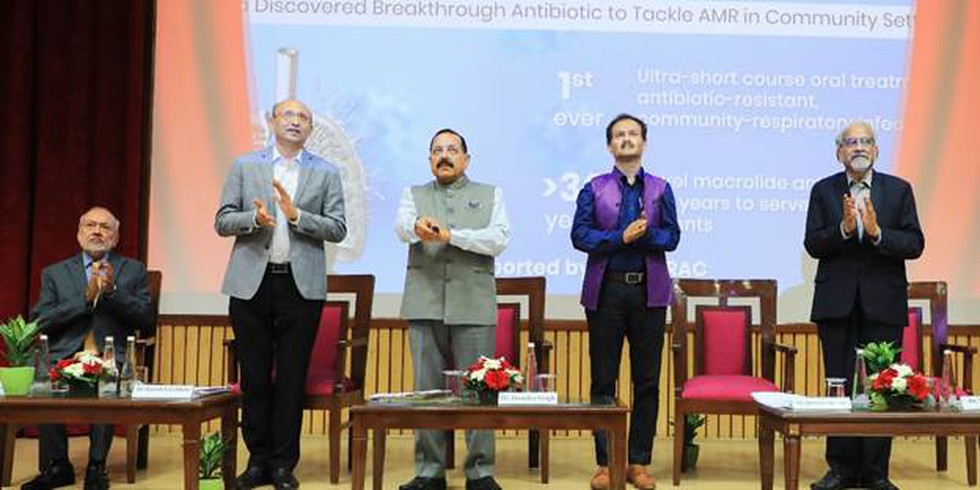
About Nafithromycin:
- It is an antibiotic which has been developed with the support of "Biotechnology Industry Research Assistance Council" (BIRAC).
- It has been brought to market under the trade name "Miqnaf".
- It is the country's first indigenously developed antibiotic aimed at tackling Antimicrobial Resistance (AMR).
- This innovation is designed to treat Community-Acquired Bacterial Pneumonia (CABP).
- Nafithromycin’s efficacy stands out as it targets both typical and atypical pathogens, offering a potent solution where no new antibiotic in this class has been developed worldwide for over three decades.
- The antibiotic has minimal gastrointestinal side effects, no significant drug interactions, and remains unaffected by food, making it a versatile option for patients.
- It offers 10x Efficacy with Just 3 doses to Combat Drug-Resistant Pneumonia.
- The development of Nafithromycin represents 14 years of dedicated research and an investment of ₹500 crores, with clinical trials spanning the U.S., Europe, and India.
Key facts about Community-Acquired Bacterial Pneumonia
- It is one of the most common infectious diseases and an important cause of mortality and morbidity worldwide.
- Typical bacterial pathogens that cause CAP include Streptococcus pneumoniae, Haemophilus influenzae, and Moraxella catarrhalis.
5. Minke whales
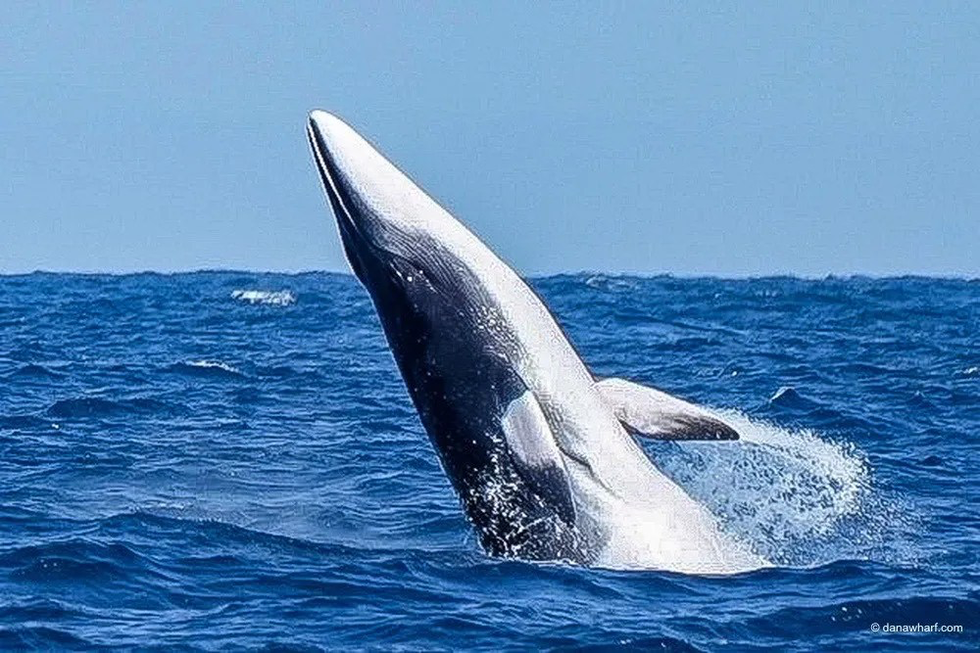
About Minke whales:
- They are members of the baleen or “great” whale family and are the smallest of the rorquals.
- There are two recognized species of minke whales with partially overlapping ranges
- The Common minke whale (Balaenoptera acutorostrata), and the Antarctic minke whale (B. bonaerensis).
- Dwarf minke whales are an unnamed subspecies of the common minke whale that occurs almost exclusively in the Southern Hemisphere.
- In addition the North Atlantic and North Pacific common minke whales also have separate sub-species designations (B. a. acutorostrata in the North Atlantic and B. a. scammoni in the North Pacific).
- Distribution: Minke whales are widely distributed through most tropical, temperate and polar regions from approximately 65°S to 80°N.
- Common minke whales are found in all ocean basins, with the dwarf minke whale subspecies more or less limited to the Southern Hemisphere.
- They feed most often in cooler waters at higher latitudes and can be found in both coastal/inshore and oceanic/offshore areas.
- IUCN Conservation status
- Common minke whale: Least concern
- Antarctic minke whale : Data deficient
6. Dibang Multi-Purpose Hydro Power Project

About Dibang Multi-Purpose Hydro Power Project:
- It is a flood control cum hydroelectric power project planned to be developed on the Dibang River, a tributary of the Brahmaputra River, in Arunachal Pradesh.
- At 2,880MW installed capacity, it will be the country’s biggest hydropower facility.
- It is being developed by India’s state-run National Hydroelectric Power Corporation (NHPC).
- The Project is designed as an energy storage project, with flood moderation as one of the key objectives, besides power generation.
- Project Features:
- The project envisages the construction of a 278m-high and 375m-long concrete gravity dam, which will be the highest Concrete-Gravity Dam of India.
- The Dam is planned to be constructed with Roller Compacted Concrete (RCC) technique and it will be the highest RCC Dam of the World.
- The dam will create a 43 km-long reservoir with a gross storage capacity of 3.85 billion cubic metres.
- It includes six Horseshoe-shaped head race tunnels of length varying from 300 m to 600 m with 9 m diameter, an underground Power House, and six horseshoe-shaped tailrace tunnels of length varying from 320m to 470 m with 9 m diameter.
7. What is Chagas Disease?
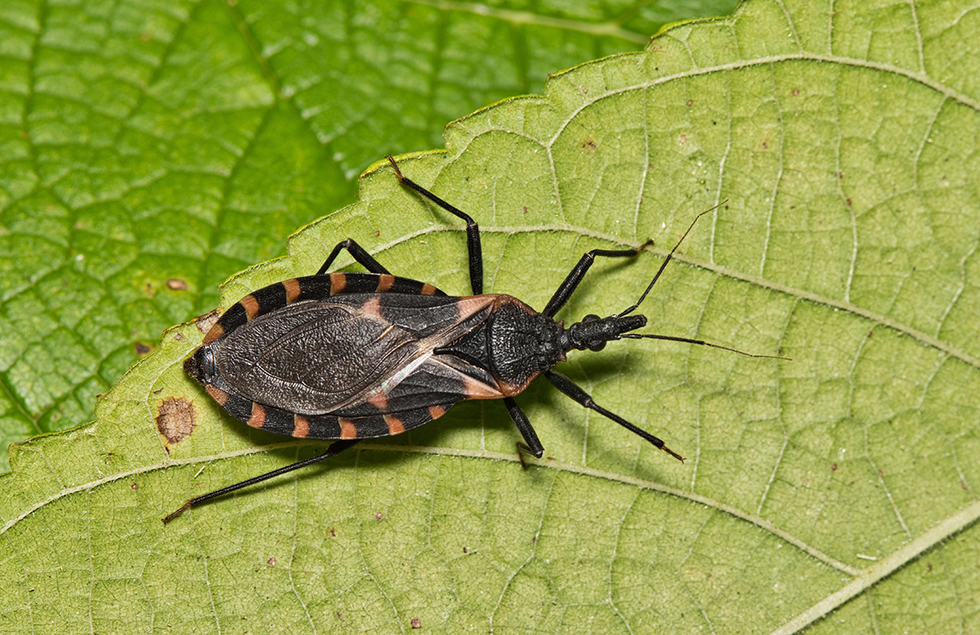
About Chagas Disease:
- Chagas (CHAH-gus) disease is an inflammatory, infectious disease caused by the protozoan parasite, Trypanosoma cruzi.
- This parasite is found in the feces of the triatomine (reduviid) bug.
- This bug is also known as the "kissing bug."
- Chagas disease is common in South America, Central America, and Mexico, the primary home of the triatomine bug.
- Also called American trypanosomiasis, Chagas disease can infect anyone. Left untreated, Chagas disease later can cause serious heart and digestive problems.
- Treatment:
- During the acute phase of infection, treatment of Chagas disease focuses on killing the parasite.
- In people who have chronic Chagas disease, it's no longer possible to kill the parasite. Treatment in this later phase is about managing signs and symptoms.
8. What is the Eastern Imperial Eagle?
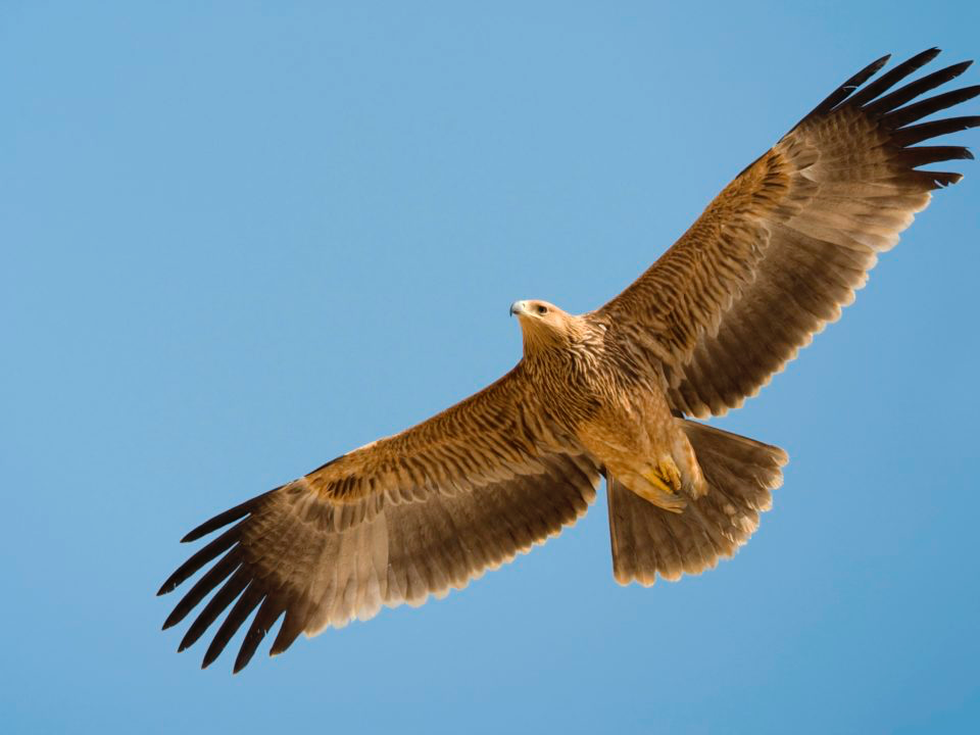
About Eastern Imperial Eagle:
- It is a large, graceful bird of prey that breeds in southeastern Europe and extensively through West and Central Asia.
- Scientific Name: Aquila heliaca
- Like all eagles, the Eastern imperial eagle is a member of the family Accipitridae. Furthermore, its well-feathered legs mark it as a member of the subfamily Aquilinae.
- It tends to live in forests, where it will build a huge, conspicuous nest in an isolated tall tree.
- Most populations are migratory and winter in northeastern Africa, the Middle East, and South and East Asia.
- Habitat: Old forests, and the forests in mountains, hills, and along rivers are all common habitats.
- Features:
- It is a large eagle. Adult total length can range from 68 to 90 cm with a typical wingspan of 1.76 to 2.2 m.
- The species displays reverse sexual dimorphism as do most birds of prey, in which males are usually smaller than the females.
- They have a pale golden crown and nape and a grey base that extends to the tail. They also have very apparent white "braces" on their scapulars.
- Like other eagles, they have strong legs and feet. Their feet include long, curved talons that they use to seize, kill, and carry their prey.
- They also have large eyes that are located slightly to the side of the head. These eyes provide them with extremely keen eyesight, allowing them to spot prey from high in the air.
9. Pobitora Wildlife Sanctuary
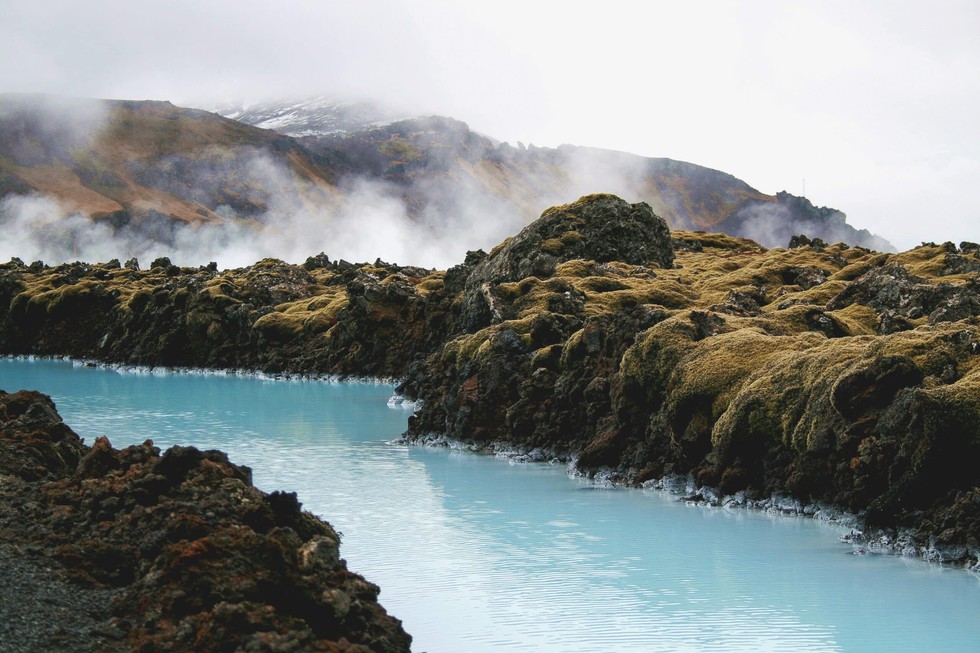
About Pobitora Wildlife Sanctuary:
- Location: It is located on the southern bank of the river Brahmaputra in Morigaon district, adjacent to Guwahati in Assam.
- It was declared a reserve forest in 1971 and a wildlife sanctuary in 1987.
- It is home to the highest population density of the Indian One-Horned Rhinoceros species (around 102 rhinos in an area of 38.8 sq. km).
- Landscape: It is dominated by alluvial lowlands and marshland.
- The Brahmaputra River offers a natural boundary to the premises of the sanctuary on the north, while the Garanga Beel offers a natural boundary to its south.
- Flora:
- 72% of Pobitora consists of the wet savannah of Arundo donax, Erianthus ravennae, Phragmites karka, Imperata cylindrica, and Saccharum spp.
- Water hyacinth (Eichornia crassipes) is a major problem, especially to waterfowl, as it forms thick mats on the water surface.
- Fauna:
- Besides rhinoceros, the other animals are leopard, wild boar, Barking deer, wild buffalo, etc.
- It is also home to more than 375 species of resident and migratory birds, such as the Indian pied Hornbill, Osprey, Hill Myna, Kalij Pheasant, etc.
10. Dal Lake
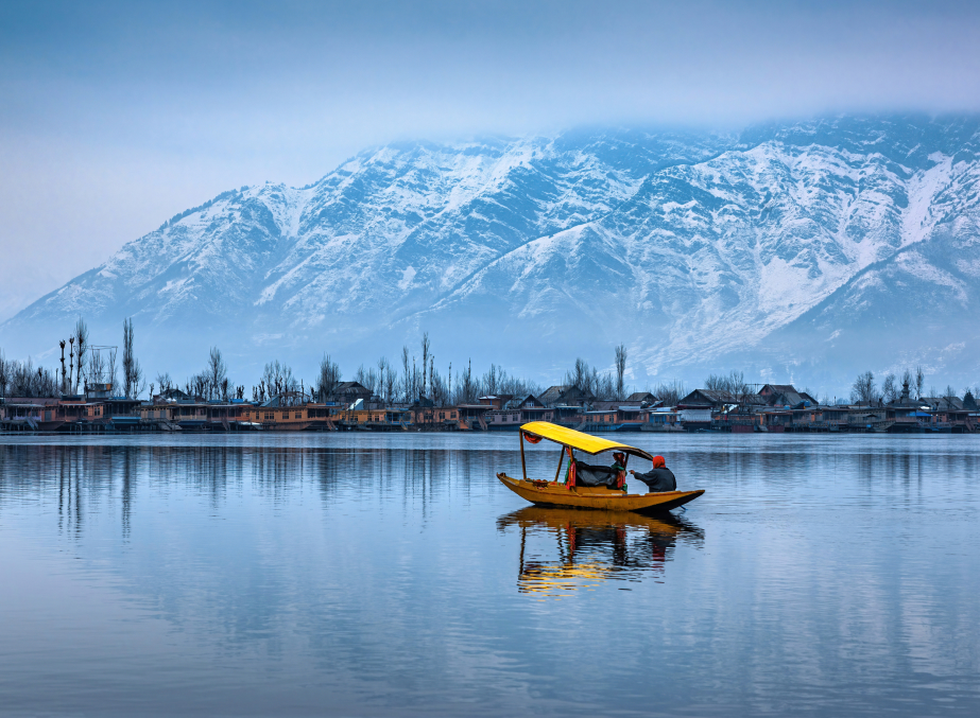
About Dal Lake:
- It is a small mid-altitude lake situated in Srinagar, Jammu and Kashmir.
- It is surrounded by the Pir Panjal mountains.
- It is named the “Jewel in the crown of Kashmir” or “Srinagar’s Jewel”.
- It is the second-largest lake in Jammu and Kashmir.
- The lake covers an area of 18 sq.km. and is part of a natural wetland which covers 21.1 sq.km.
- The wetland is divided by causeways into four basins: Gagribal, Lokut Dal, Bod Dal, and Nagin (although Nagin is also considered an independent lake).
- The shoreline of the lake, is about 15.5 kilometres (9.6 mi), is encompassed by a boulevard lined with Mughal-era gardens, parks, houseboats, and hotels.
- The floating gardens, known as “Raad” in Kashmiri, blossom with lotus flowers during July and August.
- Dal Lake is also popular for the floating market where vendors have their own Shikaras/wooden boats and approach tourists.
- The depth of water varies from 6 metres at its deepest to 2.5 metres at its shallowest.
- During the winter season, the temperature sometimes reaches −11 °C (12 °F), freezing the lake.
- Islands:
- Dal Lake includes 3 islands, 2 of which are marked with beautiful Chinar trees.
- The island located on the Lakut Dal is known as Roph Lank (Silver Island), is marked with the presence of majestic Chinar trees at the four corners, thus known as Char-Chinari (Four Chinars).
- The second Chinar Island, known as Sone Lank (Gold Island), is located on the Bod Dal (Big Dal) and overlooks the holy shrine of Hazratbal.


























































































































































.png)
.png)
.png)
.png)
.png)


.png)
.png)
.png)





.png)
.png)






.png)
.png)
.png)
.png)
.png)
.png)
.png)
.png)
.png)

.png)







.png)
.png)


.png)
.png)
.png)


.png)

.png)
.png)





.jpg)

.png)
.png)


.png)

.png)
.png)
.png)

.jpg)

.jpg)


.png)

.png)
.png)
.png)
.png)
.png)
.png)
.png)
.png)
.png)
.png)




.png)

.png)





.png)
.png)
.png)
.png)
.png)
.png)
.png)
.png)
.png)
.png)
.jpg)
.jpg)

.png)
.png)
.png)
.png)
.png)
.png)
.png)
.png)
.png)
.png)
.png)
.png)
.png)
.png)
.png)
.png)
.png)
.png)
.png)
.png)
.png)
.png)



.png)
.png)

.jpg)
.jpg)


.jpg)
.jpg)
.jpg)
.jpg)
.jpg)

.jpg)








.jpg)
.jpg)
.jpg)
.jpg)
.jpg)

















.jpg)
.jpg)







.jpg)


















.jpg)
.jpg)






























































































.jpg)
.jpg)


























.jpg)

.jpg)










.jpg)








.jpg)




.jpg)










.jpg)


















.jpg)












































.jpg)














.jpg)
.jpg)
.jpg)





.jpg)

.jpg)
.jpg)





































































.jpg)


































.jpg)
.jpg)
















































.jpg)












.jpg)


.jpg)




.jpg)
.jpg)
.jpg)

.jpg)
.jpg)
.jpg)
.jpg)

.jpg)
.jpg)
.jpg)

.jpg)
.jpg)
.jpg)
.jpg)
.jpg)
.jpg)
.jpg)
.jpg)

.jpg)


.jpg)
.jpg)
.jpg)
.jpg)
.jpg)
.jpg)
.jpg)
.jpg)
.jpg)
.jpg)











.jpg)
.jpg)





.jpg)
.jpg)
.jpg)
























.jpg)
























.jpg)









.jpg)
.jpg)







.jpg)
.jpg)









































.jpg)
.jpg)
.jpg)
.jpg)
.jpg)

.jpg)
.jpg)
.jpg)
.jpg)
.jpg)


.jpg)
.jpg)
.jpg)
.jpg)
.jpg)

.jpg)
.jpg)
.jpg)
.jpg)
.jpg)
.jpg)
.jpg)
.jpg)
.jpg)
.jpg)
.png)

.png)
.png)

.png)
.png)
.png)
.png)


.jpg)
.jpg)

.jpg)
.jpg)
.jpg)

.png)
.png)
.png)
.png)
.png)
.png)
.png)

.png)
.png)
.png)
.png)
.png)
.png)
.png)
.png)
.png)
.png)





































































-min.png)



.png)




.png)








































